Ceramic art, once written off as mere craft, wins a brighter spotlight in the L.A. scene
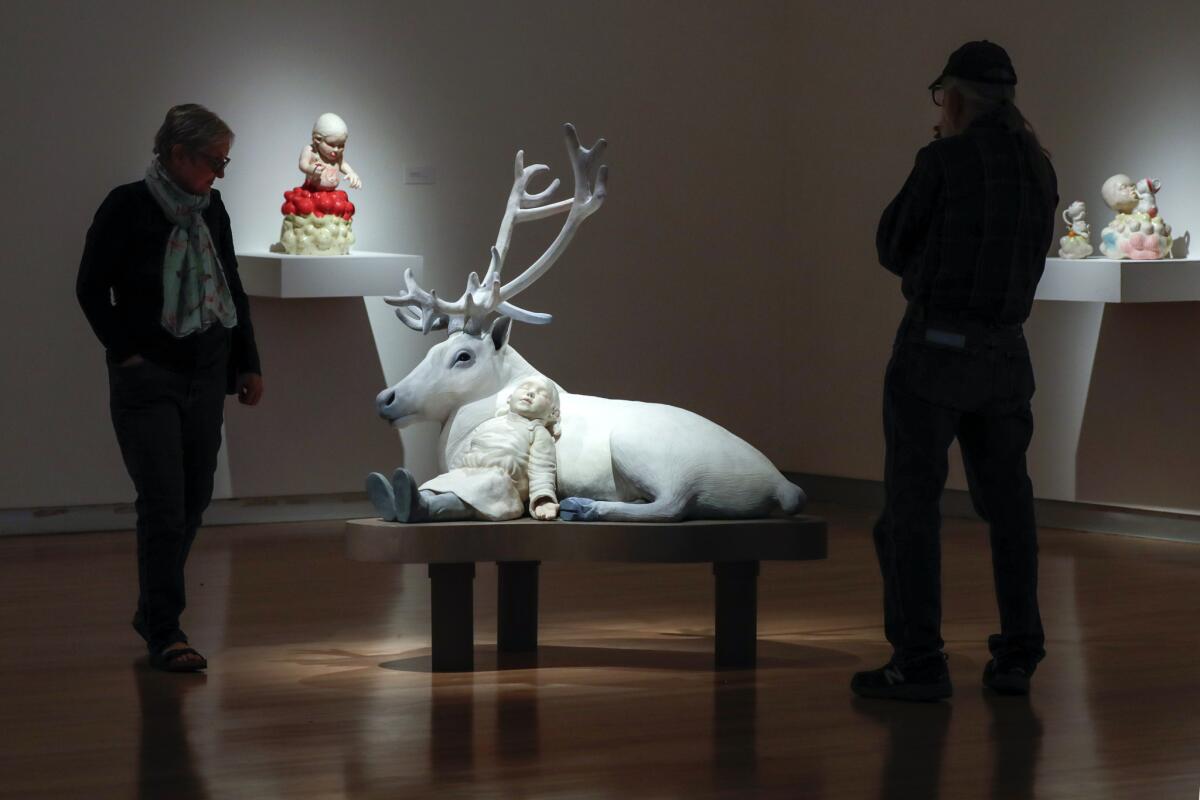
- Share via
If anything is a sign of the elevated status of ceramics, it's the central place a kiln now occupies on the campus of CalArts.
Once in disrepair because of limited interest, the kiln is in high demand. The studio area for ceramics, once a neglected corner, has become "something of a social hub," reports Thomas Lawson, dean of the School of Art. "Ceramics has flourished at CalArts in sync with its resurgence all over."
Painting has been pronounced dead enough times to render the claim meaningless, if not ludicrous. But has clay, that most primordial matter, ever been significant enough as an art medium to merit killing off?
In the last decade, however, the spotlight has burned klieg-bright and kiln-hot, to the point where clay's standing in the wider art world has never been higher, the L.A. scene never more alive.
Two museums have just launched ceramic biennials, complementing the Scripps College Ceramic Annual, the longest continuously running show of its kind in the country, which recently finished in its 74th iteration.
The closure of the city's one clay-focused gallery, Frank Lloyd, in 2015 came at a time when many others, from L.A. Louver in Venice to the Pit in Glendale, have neatly folded ceramics into their program.
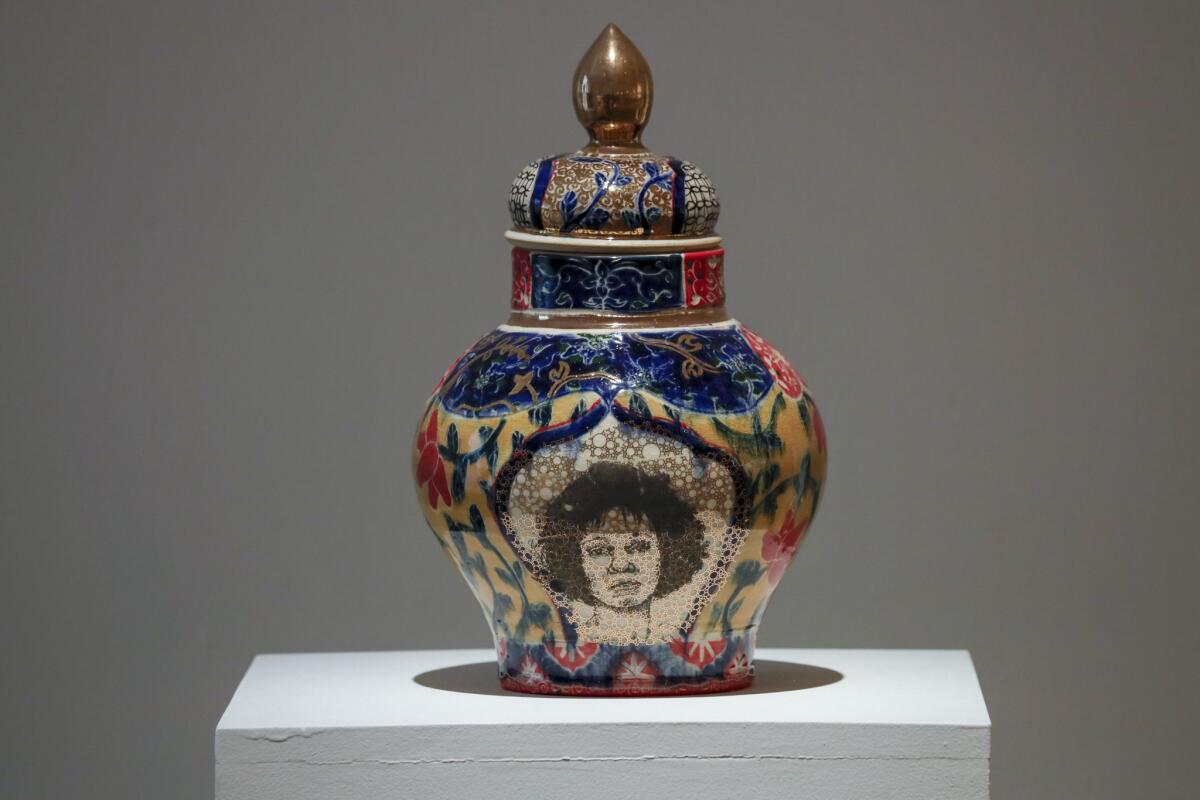
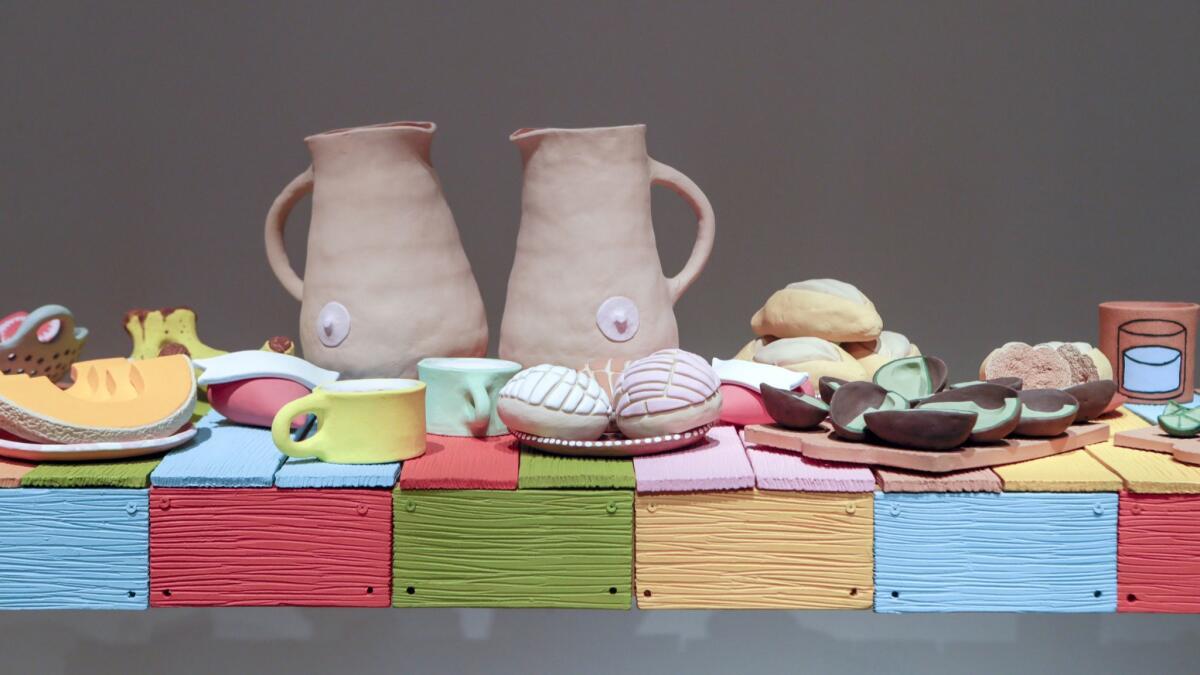
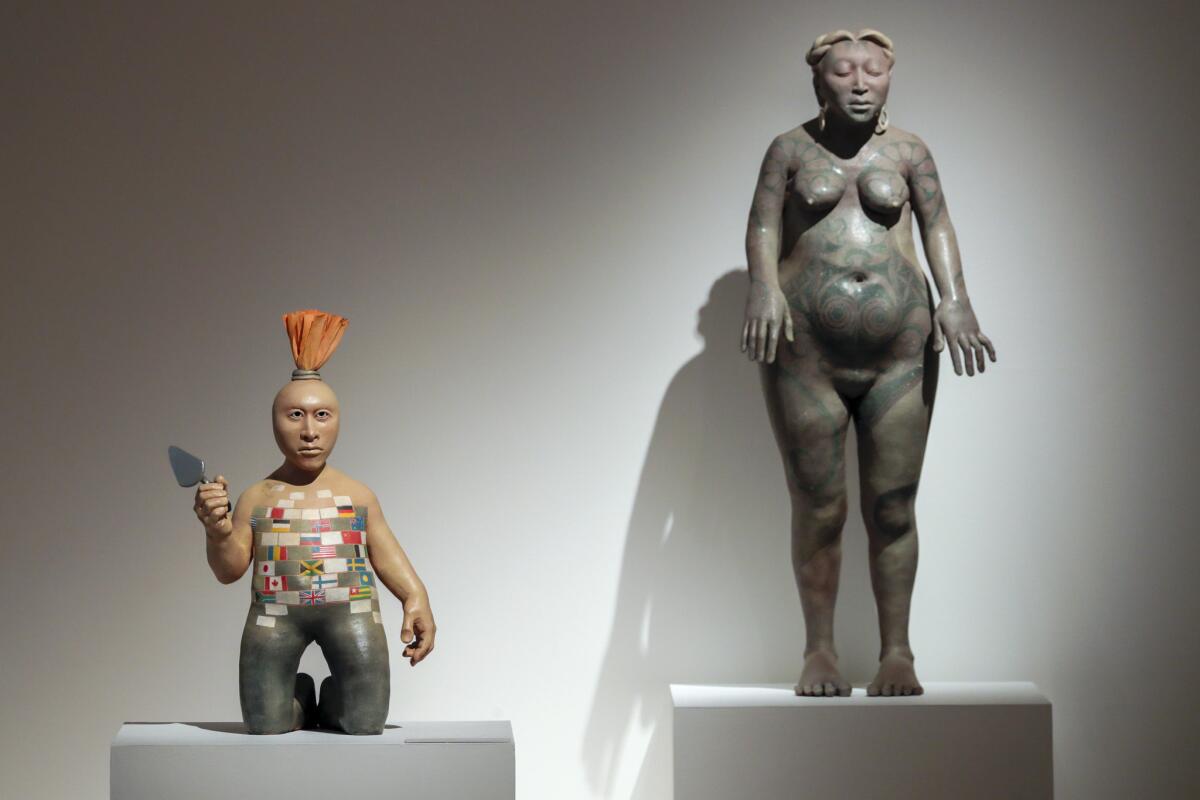
"I've never seen this level of interest in clay in L.A. before," says artist Tony Marsh. "This fanning out into almost every gallery. That's a new phenomenon and is changing the landscape seriously. That's got me excited. That was unimaginable 10 years ago."
The embrace by galleries follows that by artists. Here and nationwide, established and emerging artists are gravitating toward clay as a sculptural medium with greater ease and frequency than ever, no longer hampered by expectations to stay within one discipline and no longer deterred by the stigma that clay carried as a craft, not as an art — separate and unequal.
Educational institutions with long histories teaching clay, such as UCLA and Scripps, maintain their strength and visibility, while programs at other public and private universities, as well as at community colleges, are booming.
Cal State Long Beach has become a leading incubator of talent in the field and this fall will inaugurate its Center for Contemporary Ceramics. The CCC formalizes the university's long practice, spearheaded in the 1980s by Marsh, of inviting artists from across the globe to work experimentally alongside students in the extensive facilities on campus — "not to teach," he says, "but to model." Students can have an academic experience in the classroom, he says, but they also need the real-life experience that can come through assisting artists in residence, collaborating with them or simply observing them at work.
Clay's increased appeal, according to CalArts’ Lawson, comes in part from a need to restore the element of touch to their lives.
"Students who spend most of their time in front of screens are seeking out more hands-on experiences," he says.
Holly Jerger, exhibitions curator at the Craft & Folk Art Museum, agrees that the dominance of the digital has made artists and audiences alike more receptive to clay.
"We're in this period of renewed interest in making, in materiality and process," she says. CAFAM's new biennial, "Melting Point: Movements in Contemporary Clay," came about because "we wanted, as an institution, to contribute to that conversation."

Jerger worked with the museum's curator of public engagement, Andres Payan, to organize the show, which features 23 artists and fills CAFAM entirely, including its patio and stairwells.
“Melting Point” centers on three broad themes. First is engaging with social and political issues such as labor, immigration and the environment.
The second is stretching the medium in experimental ways. Emily Sudd, for example, conducts acts of domestic archaeology by filling vessels with ceramic discards, firing them, then slicing them in half to reveal their innards in cross-section.
The third theme is challenging clay's association with durability through work that is ephemeral or performative. Stanton Hunter's unfired clay bowls, for instance, will collapse over the course of the show, spurred along by the water droplets deposited in them by visitors.
As part of its expanded ceramics initiative, CAFAM recently bought a kiln and now offers hands-on workshops in clay.
Also launching a biennial this year is the American Museum of Ceramic Art in Pomona. Titled "Fahrenheit," the biennial is guest-juried by artist Patti Warashina and strikes a more grass-roots tone. The museum put out a call for entry and deliberately imposed no theme.
"Anyone can apply," AMOCA Executive Director Beth Ann Gerstein says. "This lets us see artists that might not come through the normal channels of curating."
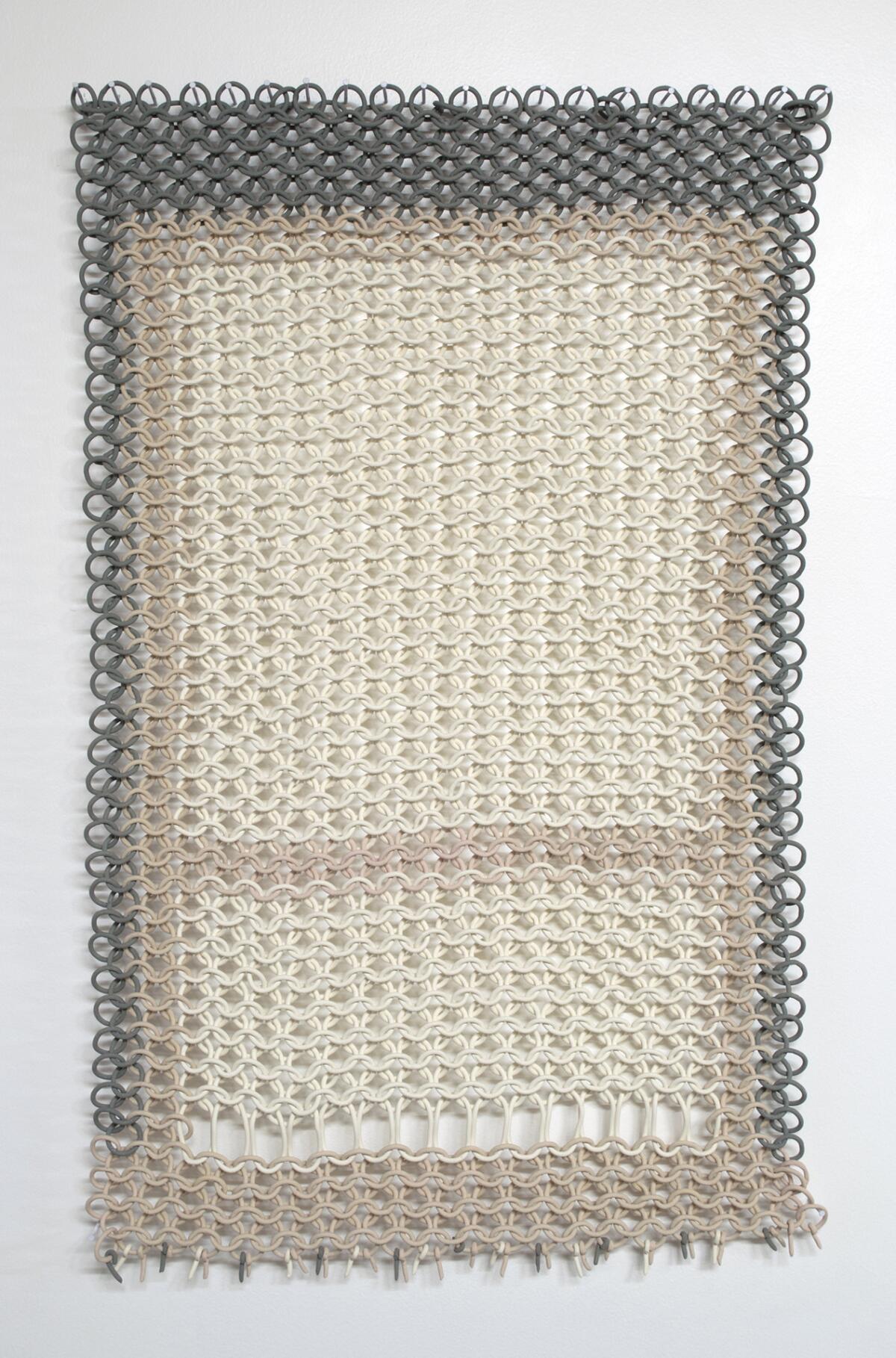
The show's 80 participants work mostly in a figurative vein or riff on vessel forms. Humor and whimsy abound. Casey Whittier's hanging panel of earthenware chain mail and Brian Caponi's stacked layers of fingerprint-sized porcelain dabs that read like intimate notations give a sense of the show's technical variety.
The Scripps College Ceramic Annual has a different flavor still, and a different organizational model. Every year it is curated by a different artist, who sets the theme. This year, Patsy Cox, head of ceramics at Cal State Northridge, chose seven artists exploring cultural and individual identity for "Stories Without Borders: Personal Narratives in Clay."
Mary MacNaughton, director of the college's Ruth Chandler Williamson Gallery, has overseen the exhibition for 30 years.
"I don't know if any other city is as vital and fecund in the area of clay as Los Angeles now,” she says. “I don't think so."
This efflorescence traces back to the groundbreaking developments in the field that took place here in the '50s and '60s. Peter Voulkos led the way with work whose scale and physicality forced ceramics to be taken seriously as sculpture. John Mason, Ken Price, Paul Soldner and many others made their own tough and vibrant contributions. Their legacy makes L.A. especially fertile ground for innovation in clay today. Among the most significant artists building on that legacy are Kristen Morgin, Julia Haft-Candell, Ben Jackel, Ruby Neri, Bari Ziperstein, Jennie Jieun Lee and Marsh.
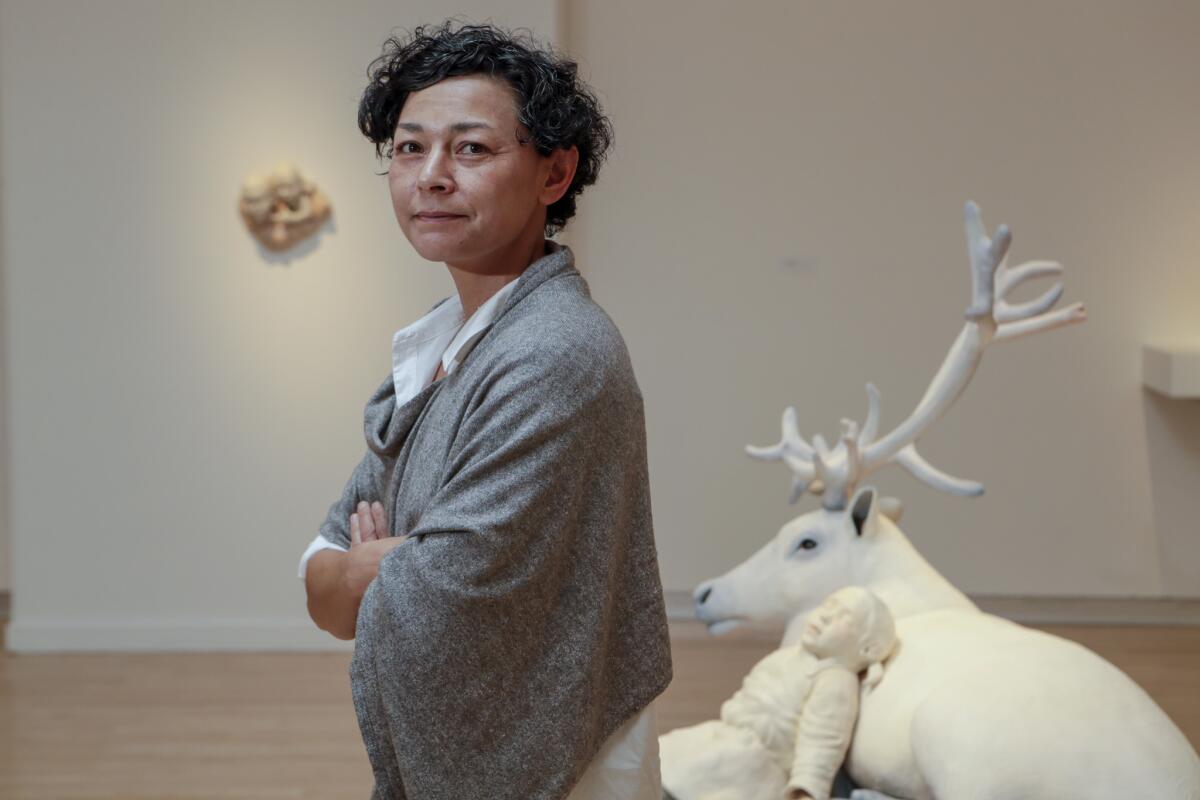
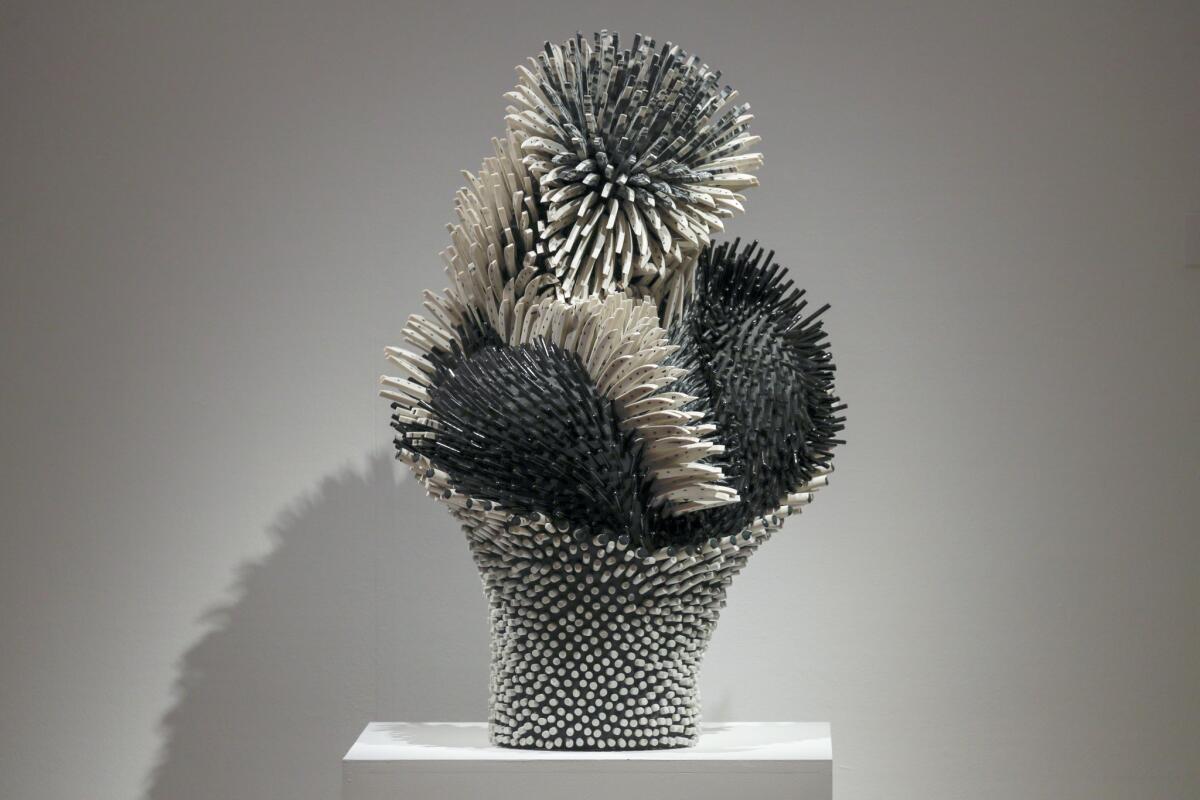
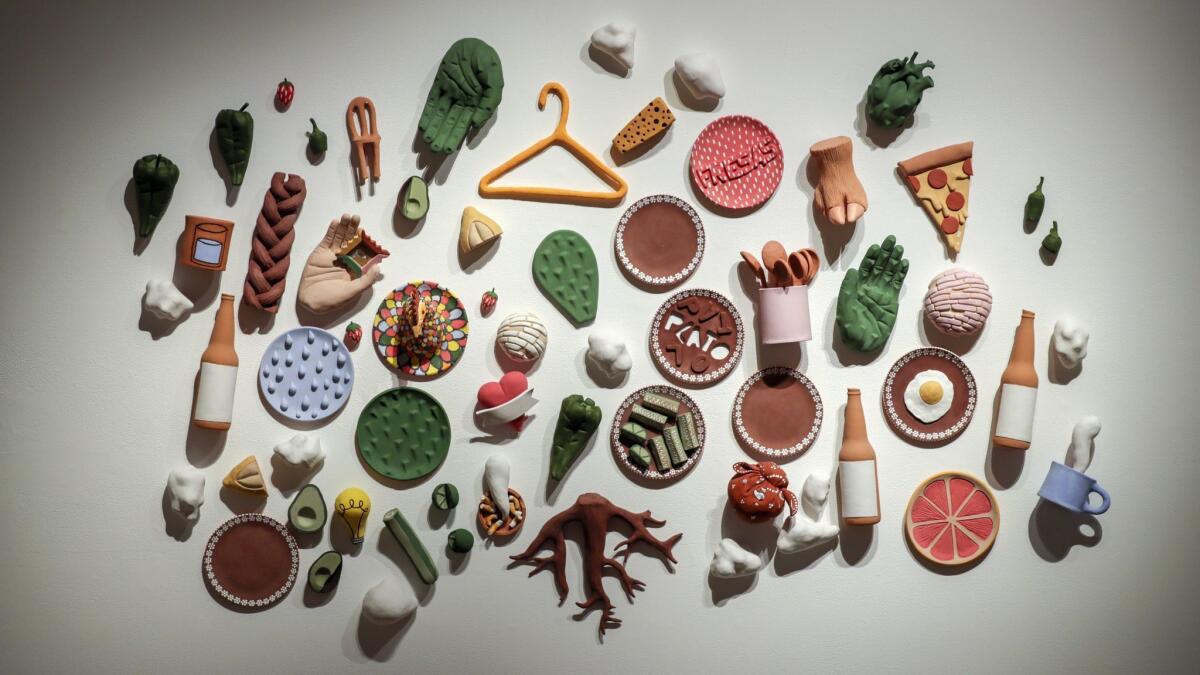
Such expansive growth in the field naturally brings change, redefinition and much self-examination. L.A. has all of the components of a complete ecology supporting ceramics but many agree that more patrons would help the discipline thrive, as would more critical discourse: scholarly and journalistic writing from the outside as well as tougher, more demanding dialogue from within.
"The field isn't accustomed to much criticism," Marsh says. "It's very communal. We need each other. There are things about the field that are wonderful, but if we have a problem, it's that we're not that rigorous with each other."
As far as the two new biennials, his enthusiasm is qualified.
"I take it as good news, but those institutions already belong to the field,” he says. “That's the field talking to itself. If other institutions with no entrenched history with ceramics or craft realize there's something worthy going on and they take it up — that would catch my attention in a different way."
In spite of the burgeoning popularity of clay, "there is still a lot of self-siloing within the field," notes artist Nicole Seisler. "Clay has been ghettoized, and it needs to be pluralized."
Seisler, a visiting ceramics professor at Scripps, runs a "ceramics-centric" exhibition space called A-B Projects on the neighboring campus of Claremont Graduate University. The shows she's staged over the last three years aim to stretch traditional conceptions of ceramic work. While Seisler applauds the increased attention to ceramics, "there's still this attitude like, 'Look, it's clay, see what we can do?' Too often the field is trying to stake out territory on technical grounds, not conceptual.
"What Voulkos and Soldner did was revolutionary, the deep dive into materiality. Now we get to move past that, take it and run with it, add content to it, marry material and metaphor, materiality and concept."

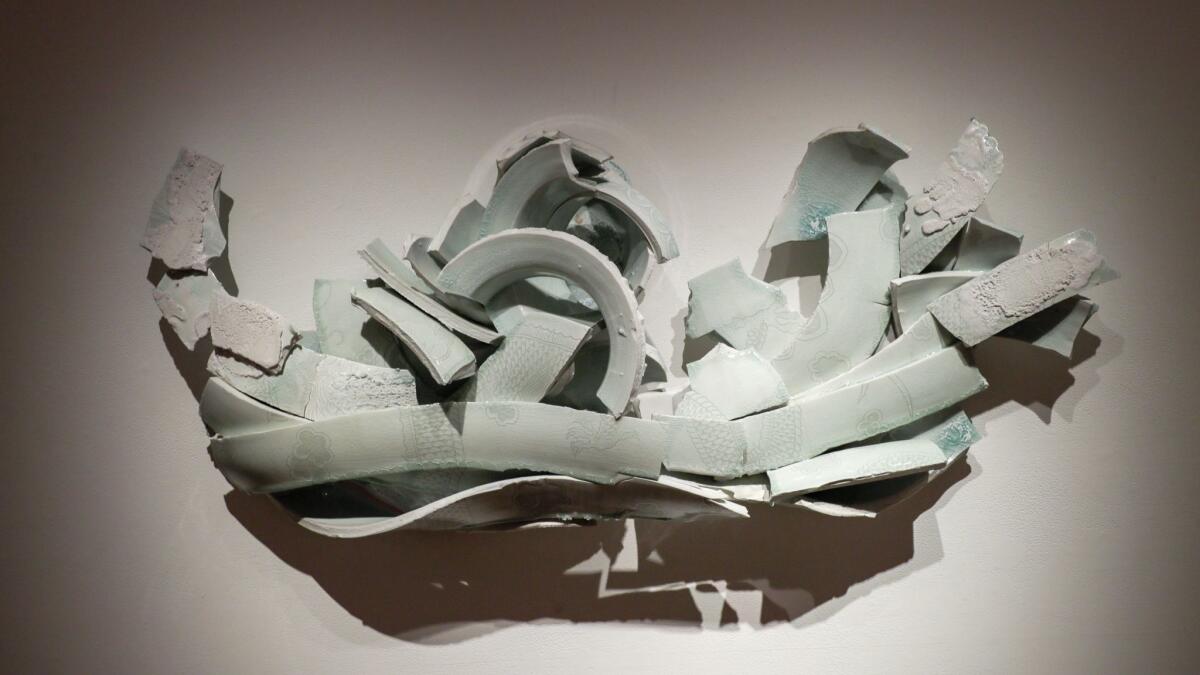
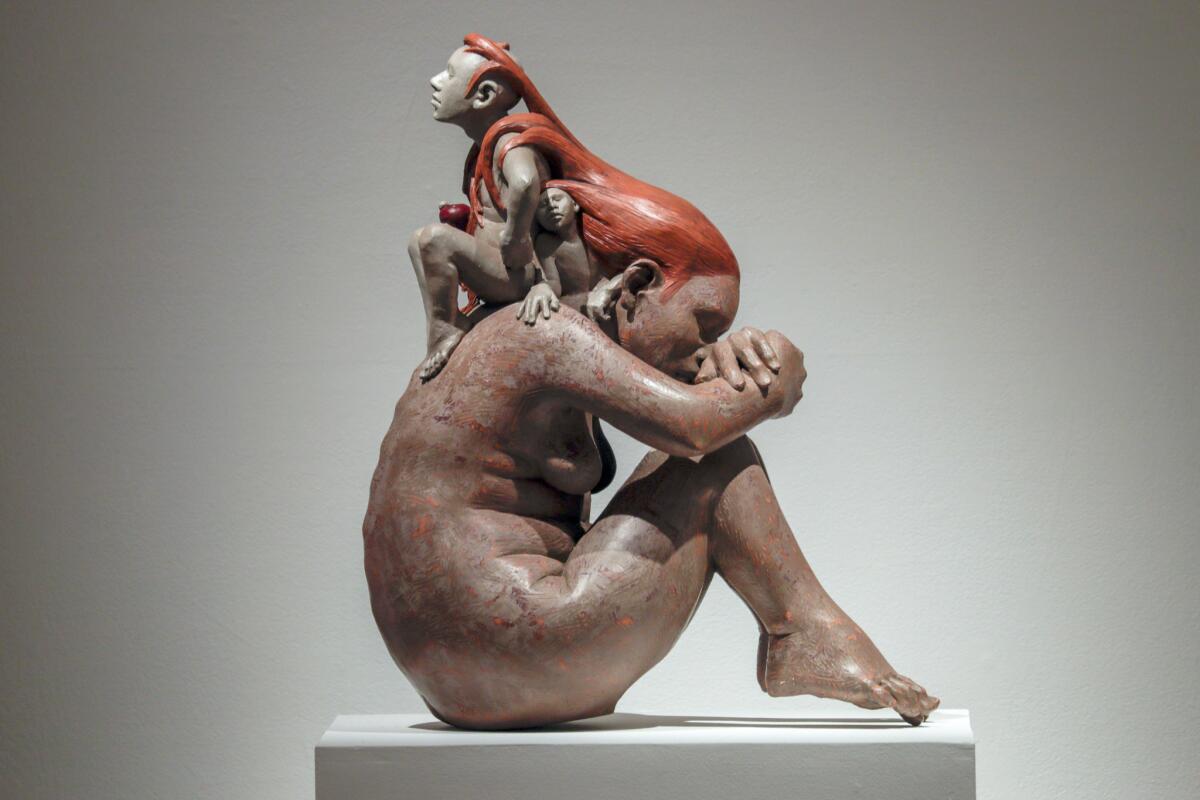
♦ ♦ ♦ ♦ ♦ ♦ ♦ ♦ ♦ ♦
‘Melting Point: Movements in Contemporary Clay’
Where: Craft & Folk Art Museum, 5814 Wilshire Blvd., L.A.
When: Through May 6; closed Mondays
Info: (323) 937-4230, www.cafam.org
‘Fahrenheit: 2018 Biennial’
Where: American Museum of Ceramic Art, 399 N. Garey Ave., Pomona
When: Through July 22; closed Mondays and Tuesdays
Info: (909) 865-3146, www.amoca.org
See all of our latest news and reviews at latimes.com/arts.
MORE ART COVERAGE:
Teotihuacan: An ancient Mexican city's remarkable art comes to life at LACMA
Something's missing from the antiquities collection at the Getty Villa
Where to find fantastic beasts? At Big Pictures' 'Airtight Garage'
The biggest entertainment stories
Get our big stories about Hollywood, film, television, music, arts, culture and more right in your inbox as soon as they publish.
You may occasionally receive promotional content from the Los Angeles Times.







